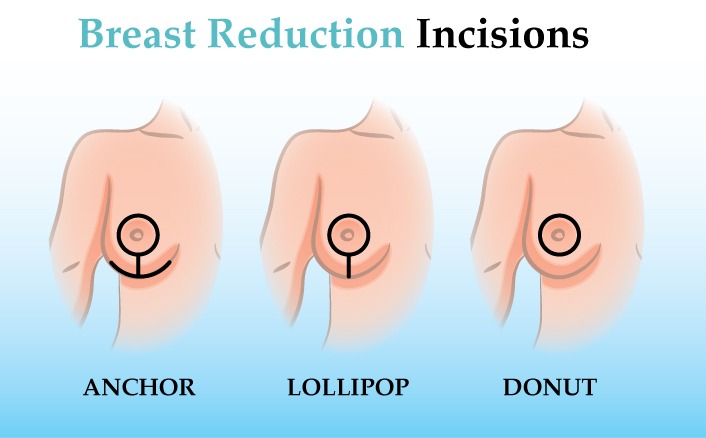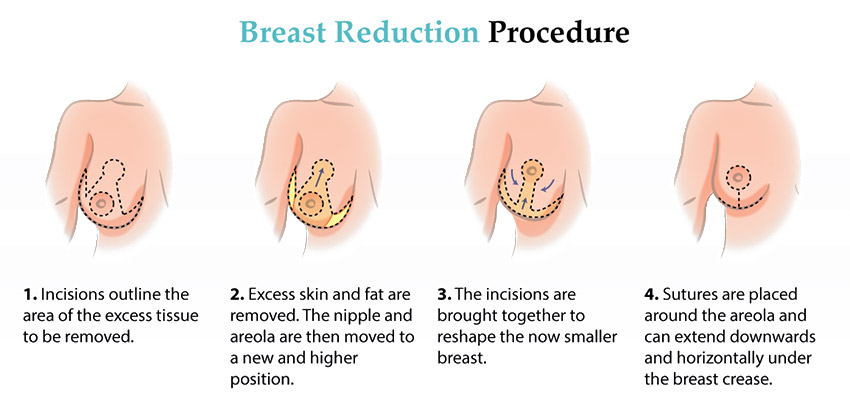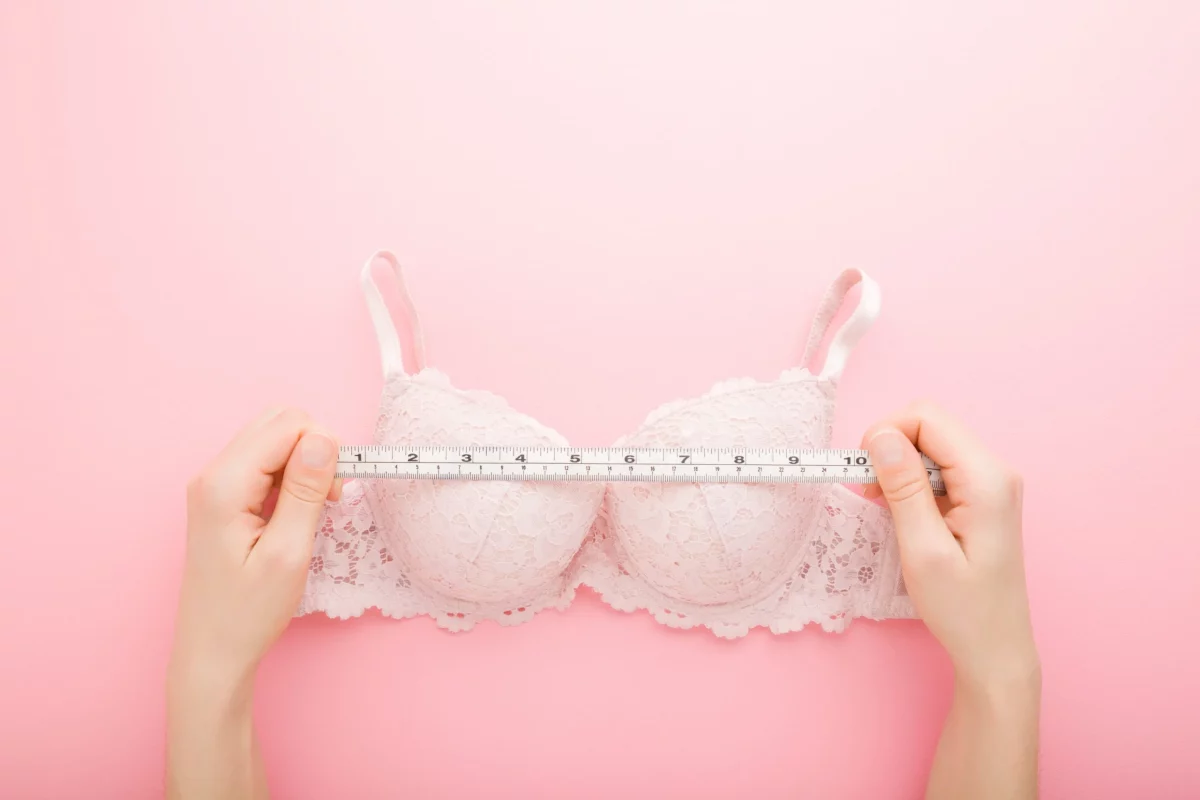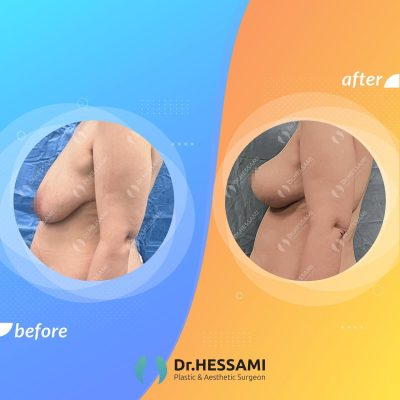Reduction mammoplasty in Iran
Reduction mammoplasty in Iran is a type of surgery in which the size of the breast is reduced. This surgery is usually for women who suffer from large breasts and physical symptoms such as neck, back and shoulder pain, skin irritations, or breathing problems. This surgery can also help women who are generally uncomfortable with the size of their breasts.
The general guidelines for reduction mammoplasty surgery are as follows:
1. Consultation: Before surgery, the patient consults with his surgeon to express his expectations and review the surgical procedure.
2. Surgery: The surgery can last several hours. The surgeon removes fat tissue, breast tissue, and excess skin from the breast to reduce its size. It may also be necessary to reshape the breast and move the nipple and areola to a more natural location.
3. Recovery: After surgery, the patient may have pain or swelling. These symptoms are usually controlled with pain medication and rest. The patient needs several weeks to several months to fully recover.
Reduction mammoplasty in Iran can help improve the patient’s quality of life, but like any other surgery, it has its own risks and complications. Talk to your doctor about whether this surgery is right for you.
Breastfeeding after Reduction mammoplasty in Iran
Being able to breastfeed after reduction mammaplasty depends on the surgical technique used, the amount of breast tissue removed, and how the nipple and areola are repositioned.
In some cases, surgeons try to preserve all or part of the milk stems so that breastfeeding is possible after surgery. But in some cases, this is not possible due to the large amount of breast tissue that needs to be removed.
In general, breastfeeding is possible after reduction mammaplasty if the nipple and areola are not completely detached and the milk stems are not damaged. However, even in this situation, milk production may be less than normal.
It is important to discuss this with your doctor before surgery. If you plan to breastfeed in the future, you may be able to choose a surgical technique that preserves this possibility.
Types of cutting patterns in Reduction mammoplasty in Iran
In reduction mammoplasty surgery, there are different incision patterns. These patterns are selected by the surgeon based on the surgeon’s personal preferences and facilities, the size and shape of the patient’s breasts, and the amount of reduction required. Here are three common cutting patterns:
1. Anchor incision pattern or inverted T: This pattern includes an incision that goes under the breast along the areola (areola around the nipple), another incision that goes vertically from above the areola to under the breast, and a third incision that goes under the breast in The direction is horizontal. This pattern may be suitable for women with very large breasts, but may cause the most scarring.
2. Vertical cut pattern or Lollipop: This pattern includes a cut along the areola and another cut that goes vertically from the top of the areola to the bottom of the breast. This pattern may be suitable for women with medium to large breasts and causes less scarring than the anchor incision.
3. Peri areolar incision pattern: This pattern includes an incision that is only around the areola. This model is suitable for women with small to medium breasts and limited reduction and creates the least scarring.
Each cutting pattern has its own advantages and disadvantages. For example, some patterns may produce minimal scarring, but may not be suitable for significant reduction. Talk to your doctor about the different options and which one is right for you.

Appropriate age for Reduction mammoplasty in Iran
The right age for reduction mammoplasty may depend on several factors, including:
– Physical growth and development: It is usually recommended that this type of surgery not be performed until the breast growth and development process is completed. For many girls, this process ends by age 17 or 18, but for others it can last until their early twenties.
– General health: Like any other type of surgery, reduction mammoplasty also requires that the patient be in good health. This is to reduce the risk of surgical complications and improve the recovery process.
– Mental and emotional: Plastic surgery can have a great impact on a person’s mental and emotional state. Hence, it is important that the person is at an age where they are able to fully understand the consequences and possibilities of surgery and make an informed decision.
Your doctor can give you the best advice in this regard according to your condition.
Reduction mammoplasty in Iran is suitable for which people
Reduction mammoplasty surgery is suitable for people who suffer from the large size of their breasts and face the following problems:
1. Chronic pain: Some women with large breasts may suffer from chronic pain in the neck, shoulders, or back. This pain may be due to the weight of the breasts and the pressure they put on the muscles and bones of that area.
2. Skin problems: large breasts can cause irritation and inflammation of the skin under the breast. This may cause redness, itching, and even skin inflammation.
3. Limitation of physical activity: Large breasts can cause limitation in physical activities, including aerobic exercise or daily movements such as bending or picking up objects.
4. Emotional or psychological problems: Some women may be disappointed or embarrassed by the size of their breasts, and this can affect their mood and self-confidence.
5. Problems with dressing: Some people may have problems finding clothes that fit or are comfortable.
If you are experiencing any of these problems and they are affecting your quality of life, you may want to talk to your doctor about whether or not reduction mammoplasty surgery is right for you.
Procedures for Reduction mammoplasty in Iran
Reduction mammoplasty surgery is generally performed in several stages:
1. Consultation and planning: In this step, the surgeon will talk to you about your expectations, wishes and concerns. He or she may explain to you what will happen during the surgery and during the recovery process, as well as talk to you about the possible benefits and risks.
2. Pre-surgery: Before surgery, some medical and imaging tests may be done. This can include mammograms, blood tests, and other imaging.
3. Day of surgery: On the day of surgery, you will be taken to the operating room. For this procedure, you will be put under general anesthesia. The surgeon will then begin making an incision using one of the incision patterns (previously explained to you) to remove the excess breast tissue. He will then reconstruct the breast and close the skin again.
4. Recovery: After surgery, you will be transferred to an intensive care unit to be monitored. You will likely be hospitalized for a few days. After that, you will return home and continue your recovery at home. Recovery may take weeks or months.
5. Follow-up: After surgery, you must visit the surgeon for follow-up appointments. These visits are to make sure you are recovering well and that there are no complications.
This process may vary depending on your personal circumstances and that of your surgeon. Therefore, it is important to discuss all the details with your surgeon before surgery.

Procedures before Reduction mammoplasty in Iran
Before reduction mammoplasty surgery, there are several important steps that must be taken:
1. Consultation: In the initial stages, you should consult your surgeon. Your surgeon should talk to you about your expectations, wishes, and concerns, and explain what will happen during surgery and during the recovery process. Your surgeon should also discuss the potential benefits and risks with you.
2. Medical tests: Before the surgery, you need to do several tests. This can include blood tests, mammograms, and other imaging tests.
3. Physical Preparation: Depending on your health, you may need to make lifestyle changes before surgery. This may include changes in diet, special exercises, or changes in medication.
4. Psychological preparation: plastic surgery can have a great impact on a person’s mental and emotional state. Therefore, you may need to go to psychological counseling before surgery.
5. Pre-preparation of the home: Considering that you need some time of complete rest after the surgery, you may need to prepare your home for recovery. This can include things like preparing meals that you can eat after surgery, setting up a comfortable resting place, and organizing your living space for easy access.
Depending on your personal circumstances, additional steps may be required. Therefore, it is important to consult your doctor and keep him informed of any changes in your health.
Care after Reduction mammoplasty in Iran
After reduction mammoplasty surgery, proper care is very important to ensure a quick recovery and success of the surgery. Here are some important tips about post-surgery care:
1. Rest and rest: It is important to give yourself time after surgery to rest for the necessary recovery. This may include getting enough sleep, avoiding strenuous physical activity, and creating a calm environment at home.
2. Care of sutures and surgical site: Depending on the type of surgery, you may need special care of sutures and surgical area. This may include cleaning the area with antiseptic solutions, changing bandages, and following your doctor’s instructions about bathing and washing.
3. Medication: Your doctor may prescribe medications to control pain, prevent infection, and reduce swelling. It is important to follow the instructions for taking the medication exactly.
4. Medical follow-ups: You should visit a doctor for follow-up appointments. These visits are to make sure you are recovering well and that there are no complications.
5. Proper nutrition: Proper nutrition can help speed up your recovery. Eating foods that are full of protein, vitamins, and minerals can help tissue repair.
6. Gentle physical exercises: After some rest and with the doctor’s advice, gentle physical exercises can help you recover. This may include short walks and stretching exercises.
Depending on your personal circumstances, other special points may need to be observed. Therefore, it is important to consult your doctor and follow his instructions exactly.
The cost of Reduction mammoplasty in Iran
(Suitable for large breasts and people who want to reduce their breasts)
The cost of breast reduction surgery in Iran is between 1600 and 2500 euros
Usually one night stay in the hospital is considered
If you are not a resident of Tehran, the duration of stay is 8 days
| The cost of reduction mammoplasty surgery in Adl Hospital |
1700 euros |
Including the cost of the surgeon’s fee + hospital | |
| Cost of staying at the hotel (8 nights on average) | 320 euros | The cost of each hotel night is 40 euros | |
| Other costs related to breast lift surgery in Iran | |||
| Cost of blood test | Between 10 and 15 euros | The difference depends on the type of blood test | |
| The cost of consultation with a cardiologist | Between 20 and 40 euros | For people over 40 or heart patients | |
| The price of a special gun | Between 50 and 100 euros | The price difference depends on the brand and model of the gun | |
| The cost of medicine and other health items | Between 10 and 20 euros | ||
| Optional surgery costs | |||
| Nurse fee (per night) | 30 euros | If you are traveling alone | |
| The cost of changing the dressing by the nurse | 15 euros | ||
Attention:
If you have an underlying disease or medication, let us know
If you have already had breast surgery or mammoplasty, the cost of the surgery will increase slightly
Let us know if you have anemia or other blood disorders
If the breasts are very big, we may have a little price increase
How to sleep after reduction mammoplasty breast surgery
After reduction mammaplasty surgery, your sleeping pattern may need to change to avoid excessive stress and pressure on the surgical area and speed up recovery. Here are some tips for sleeping after breast surgery:
1. Sleeping in a semi-sitting position: For the first few weeks after surgery, it is best to sleep in a semi-sitting position. This can be done by using a number of pillows to support the back and shoulders. This position helps to take pressure off the surgical area and reduce swelling and bleeding.
2. Avoid sleeping on your stomach or side: Sleeping on your stomach or side may put pressure on the surgical area and delay the healing process. It is best to avoid sleeping in these positions unless advised by your doctor.
3. Use sleep brushes for support: Some women find that using a sleep brush (a type of wireless breast support) during the night can help them be more comfortable and avoid putting too much stress on the breast tissues. .
4. Adjusting the sleeping environment: Make sure that your sleeping environment is calm and comfortable. This may include adjusting the room temperature, using soft pillowcases, and maintaining adequate lighting.
Remember that each person may have a different experience with the recovery process, so talk to your doctor if you have any concerns or questions.
The difference between reduction mammoplasty and breast lift
Reduction mammoplasty and breast lift are two different types of breast surgery, each of which has different goals and techniques. These two types of surgery are sometimes combined, but for better understanding, their main differences are as follows:
Reduction mammoplasty:
Reduction mammoplasty is a surgical procedure in which excess breast tissue, fat, and skin are removed from the breasts to reduce their volume. This operation is usually performed for women who have physical pain or psychological discomfort due to the large volume of their breasts. After removing the tissue, the doctor reconstructs the breasts to have a more natural and attractive shape.
Breast lift:
Breast lift or mastopexy is a surgical procedure in which excess skin is removed from the breasts and breast tissue is moved to improve their shape and position. This procedure is usually performed on women who are uncomfortable with drooping or sagging breasts, which may occur due to age, genetic conditions, childbirth, breastfeeding, or weight changes. In this operation, the volume of the breast does not change; But only its shape and position changes.
Both procedures may involve removing or repositioning the nipple, and both can be combined with breast implants to create the desired volume or shape. The choice between these two procedures depends on individual needs and goals, and should be determined in consultation with a plastic surgeon or surgeon.




